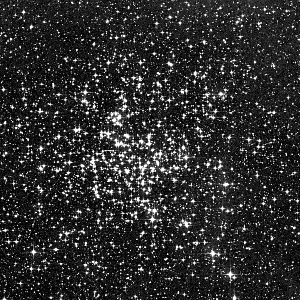|
NGC 2477 is the most spectacular open cluster in the sky, at least as drawn
by software, and presumably those located in the southern hemisphere. Located about 5o
northwest of Naos (Zeta Pup), its low southerly declination makes
a difficult target for northern hemisphere observers.
Discovered by Abbe Lacaille when he was in South Africa
during 1751-1752, this cluster subtends nearly 1/2o,
approximately the size of the full moon. It lies some 4000 light years
distant and has been estimated to be nearly 1.3 billion years old.
NGC 2477 contains stars ranging from 10th to 14th magnitude,
making it a good target for large and small telescopes alike. In binoculars
or a small refractor it appears as a beautiful round fuzzy patch of sparkling
stars. Larger scopes will resolve the many fainter stars into a truly wonderful
cluster. Burnham described it as "a striking group, somewhat smaller than
M46, but richer and more compact, containing about 300 stars crowded into
a 20' field."

In a part of the sky bristling with wonderful
clusters, NGC 2477 is often overlooked. This image from the DSS shows a
20' x 20' field. North is down and east is to the right.
I've been meaning to have a look at NGC 2477 for years.
Finally I chose a time when the cluster was passing between two trees
on the hill to my southeast. It was obvious in the finder and should
make a great object for small telescopes. In my 18" it appeared, well,
just like it is drawn on the charts--a very nice, regular smattering
of 11-13th magnitude stars.

The view in an 18" at 95x. North is up, east is to the
right.
|